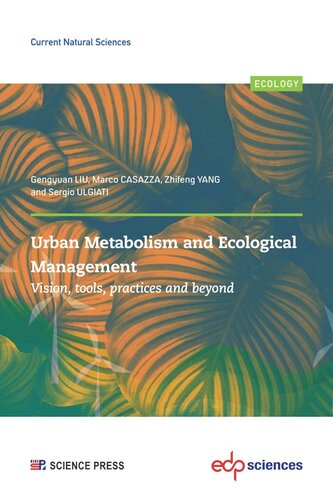

Most ebook files are in PDF format, so you can easily read them using various software such as Foxit Reader or directly on the Google Chrome browser.
Some ebook files are released by publishers in other formats such as .awz, .mobi, .epub, .fb2, etc. You may need to install specific software to read these formats on mobile/PC, such as Calibre.
Please read the tutorial at this link: https://ebookbell.com/faq
We offer FREE conversion to the popular formats you request; however, this may take some time. Therefore, right after payment, please email us, and we will try to provide the service as quickly as possible.
For some exceptional file formats or broken links (if any), please refrain from opening any disputes. Instead, email us first, and we will try to assist within a maximum of 6 hours.
EbookBell Team

4.4
22 reviewsUrbanization is the one of the most evident forms of anthropization. With most of the world population living in cities, the need of thinking about a more sustainable urban lifestyle has become an imperative. This is why present and future generations of scholars, urban managers and policy makers should be prepared to work together to support the reduction of impacts generated by urban activities, while pursuing the goal of an equitable and sustainable well-being within the planetary boundaries. In this respect, the use of different methods and tools can support the implementation of roadmaps and policies. Besides that, different communication languages can be used to enhance the development of a shared reflective vision about the future of cities among citizens, as major actors of the urban life and its transformation. This book provides an accessible overview of some key methods to deal holistically with the analysis of urban resources flows to readers with an interest in the academic or professional reference of the different approaches for studying urban metabolism. It presents some of the most important tools along with relevant case studies to illustrate their potential application. Experts in the field and holding the belief that visions and hopes trigger decisions and behaviors beyond the knowledge, the authors introduce readers to the use of different art-based methods to engage with citizens towards a common outlook on the future of our cities. The book also offers an enhanced reading experience by featuring a soundtrack composed by one of the authors and available through the QR code at the beginning of each chapter.